I’ve been talking a lot about my art and my research interests lately, but I’ve never mentioned them together. For a long time, that was how I felt about my academic work and my artwork: they weren’t related to another beyond giving me a better technical understanding of etching and other intaglio techniques, which was helpful when I was a curator. I’ve gradually realized, however, thanks in large part to sharing all of my projects on one website, that my art actually does influence my academic work beyond giving me hands-on experience with different art-making methods. Today then, I’d like to talk about my art influences my scholarship.
Admittedly, the most significant way that my art shapes my academic work is that it gives me a break from it. Being creative in other endeavors not related to my research allows me to approach my writing and other work with fresh eyes and a willingness to look at them from new perspectives. Drawing and painting also assuage the resentment I’d start to develop l toward my work if I didn’t have that space, which makes me more likely to follow through and finish projects. I learned from my time at Williams that focusing on your academic work all the time is all but guaranteed to cause burnout, so in a very real way, having art projects helps me maintain the stamina to continue my research.
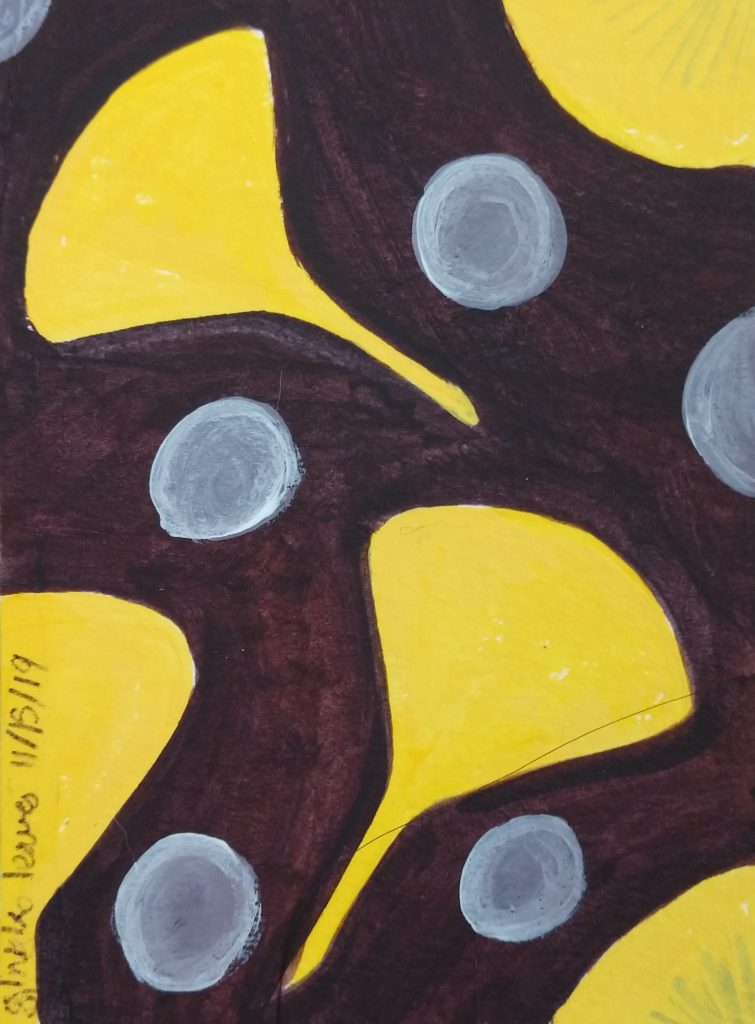
My art is more than just a break from work though. It also has helped me visualize important long-term working strategies. One of the most substantial is the impact of doing a little work every day. It’s easy to feel like if you’re not writing prodigious amounts all the time, or spending weeks upon weeks in the archive, you’re not accomplishing anything. Of course, those marathon sessions are important, but financially and emotionally they’re not sustainable. In the long term, consistently putting in a little effort every day is what enables me to take those larger endeavors and complete them in a meaningful way.
The art challenge I posed to myself in 2019 really helped me visualize the cumulative results of small daily efforts. On a daily basis, painting a 2″ x 3″ abstraction doesn’t take a significant amount of effort. Most of them I finished in 30 minutes or less, and even the most detailed ones took maybe an hour at most. By the end of the year, however, I’d made a painted collage measuring over 5′ by 3′. If you’d told me at the beginning of the year that I’d finish a painting that size while simultaneously completely classwork, I would have been skeptical. Yet I was able to do just that by showing up and painting a little every day. As I’ve continued working my way through the program, I’ve kept this experiment in mind as an example of what consistent, modest efforts can do for any project.
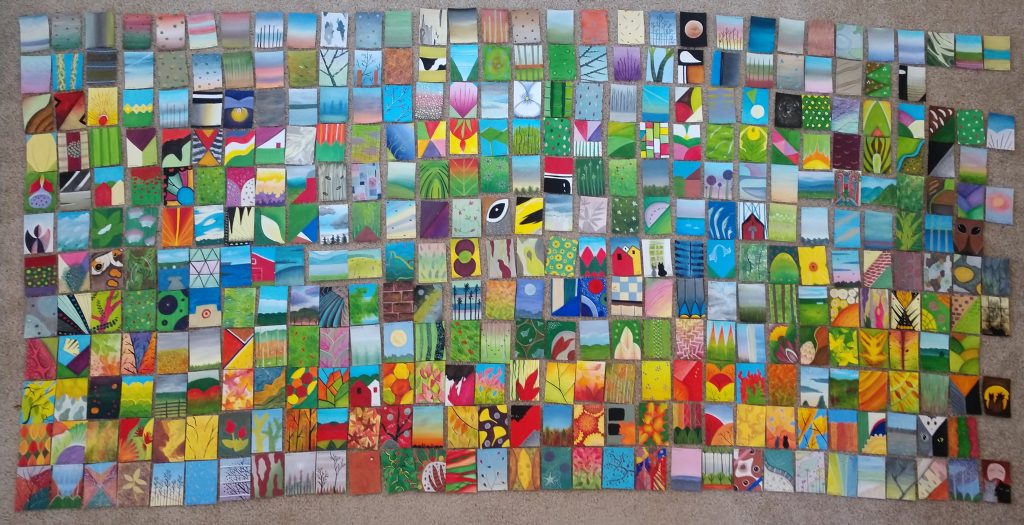
My art has also helped me understand the importance of time to completing projects, and more specifically giving them plenty of time to gestate. In our deadline-driven society, we’re expected to finish things in a straightforward, linear fashion. I’m a deadline-driven person myself, thanks to years of working on exhibitions, so I know the importance of sticking to a specific schedule. At the same time, however, your work can really benefit from long respites from them. When you give your work the space to hibernate, you can often return to them with new perspectives and ideas that make them all the more enriching.
That was what happened with this silo print I did a couple of years ago. The scene is based on an iconic silo in Roswell (seriously, every artist in the area has drawn or painted it at some point). I originally sketched in the silo back in 2013 because I thought it would make for a nice intaglio print, but I wasn’t quite sure how I wanted it to look at the time, so I put the drawings in storage. From 2014 to 2015, I completed a series of abstract studies based on color schemes I’d noticed in my surroundings, an exercise that would later inspire 2019’s painting challenge. I liked the idea of using the color studies for another project, but I didn’t know how to do so, so I put those in storage as well. Then, in early 2018, I decided to combine the two, incorporating the colors I’d painted into the sky of the intaglio scene. Giving myself permission to set those sketches aside and return to them at a later date resulted in a work that was far more interesting than if I had just launched into it without reflection. As I keep working through the program, I try to remember the importance of reflection and revisiting, even as I know I need to stick to deadlines.
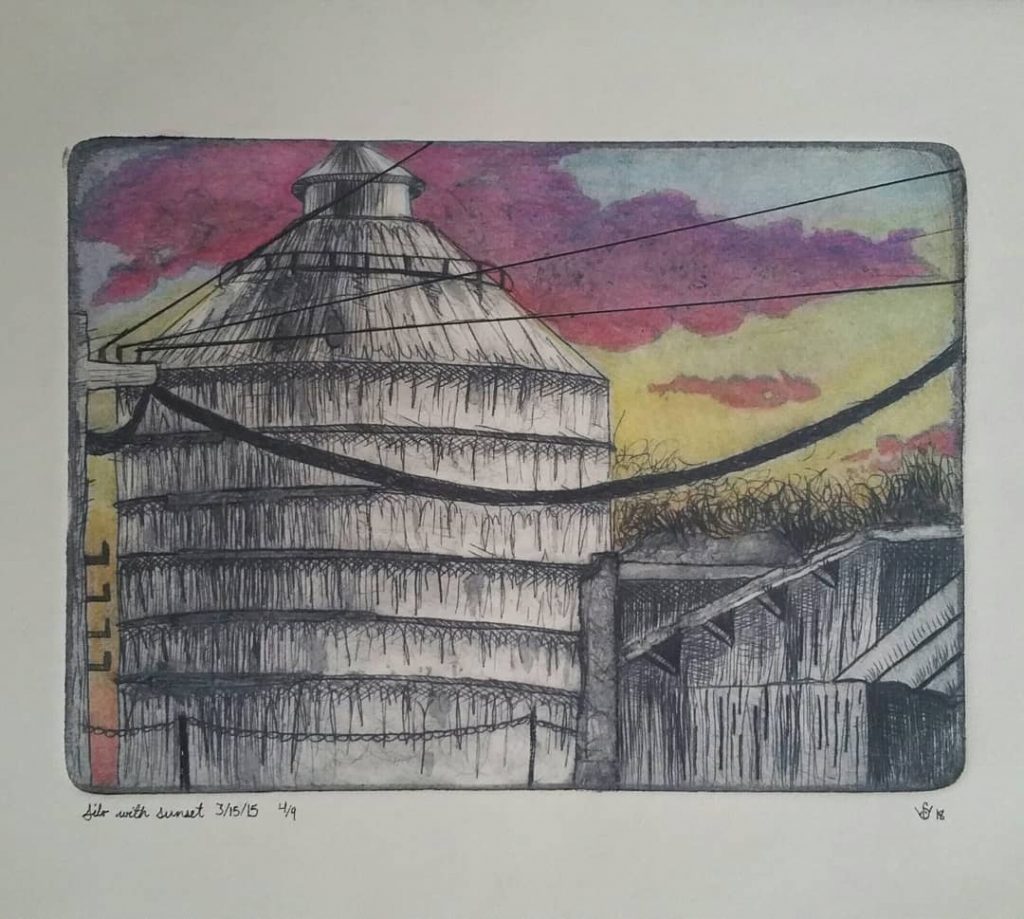
Roswell Silo, 2018 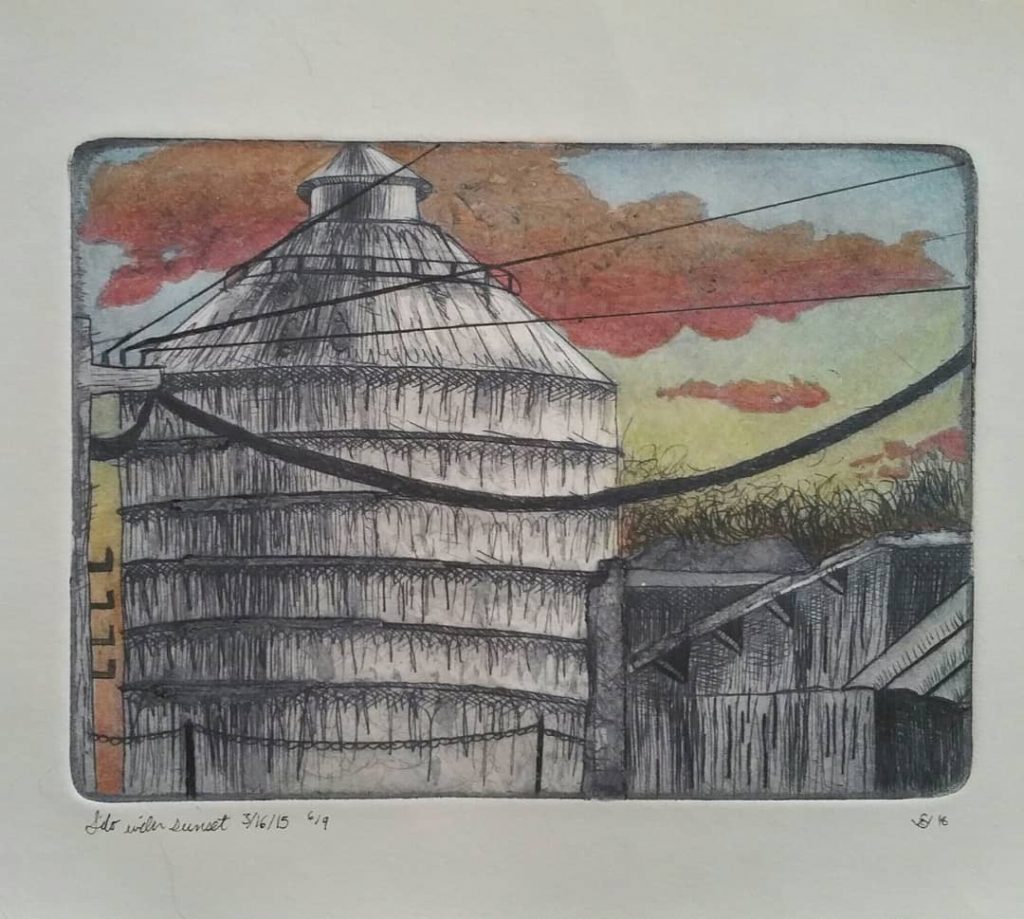
Roswell Silo, 2018
The third way that my art influences my academic work is to be open to transformations in ideas. Starting out a project with one objective in mind doesn’t guarantee that it’s going to necessarily turn out the way you expect. Indeed, your focus might shift altogether over the course of the work, but that’s okay. It’s a little scary to think that you’re not in total control of the outcome, or over your own interests for that matter, but the end result will probably end up being better than what you initially set out to do.
That’s the story behind the print below. I made the original monotype on marbled paper in 2015, as part of a series of six. I was going through a rough personal time at that point, and had envisioned this series as my way of working through my emotions. Other commitments came up, however, and by the time I got back to working on them, those feelings were gone. Since I could no longer work under my original motivation, I put them in storage. In late 2016, I made the argali sheep skull print, based on a specimen I’d seen at the Museum of Osteology in Oklahoma City. I knew the print needed some color in it because it looked too empty with just the skull, but I didn’t like any of the experiments I came up with, so (once again) I put that in storage. Then in early 2018, when I was cleaning out some of my art supplies, I noticed that the skull plate fit the monotypes almost perfectly, and decided to reprint it. The end result wasn’t what I had set out to do in either work, but the two ideas, when combined, made for a more successful piece. As I keep working through my program here, it’s important to remain open to my dissertation evolving in focus or direction. It may not end up being entirely what I set out to do initially, and that’s okay.

A fourth way that my art practice positively influences my scholarly one is through the idea of working consistently at developing new skills or refining old ones and applying them to new projects. I’ve been making art for as long as I can remember, but I’m always trying to get better at the things I do through practice. Similarly, I’ve been writing and researching for a long time, but I can always be more efficient or probing in my scholarly inquiries. Knowing that there’s always room for improvement, and that I can continue to apply those skills to new projects, motivates me to keep getting better at what I do.
That’s the story behind the still life below. Like a lot of the projects I’ve featured in this post, this piece developed over several years. I first marbled the paper in 2013, but didn’t collect the objects that appear here until 2019. I then painted the actual still life in early 2020, shortly after finishing my year-long abstraction challenge. If I had painted it earlier, I probably would have rendered it in a more painstaking style reminiscent of 19th-century trompe l’oeil painting. Thanks to my abstraction challenge, however, I became more comfortable with more painterly mark-making that could both suggest the subject it represented while signifying its own materiality as pigment. As a result of that daily painting practice, I approached this project with a more painterly mindset and didn’t try to replicate the objects I was painting. The result, in my opinion at least, seems more relaxed and confident. Similarly, consistently writing on this blog, or other platforms, encourages me to be less constrained with my own academic writing.
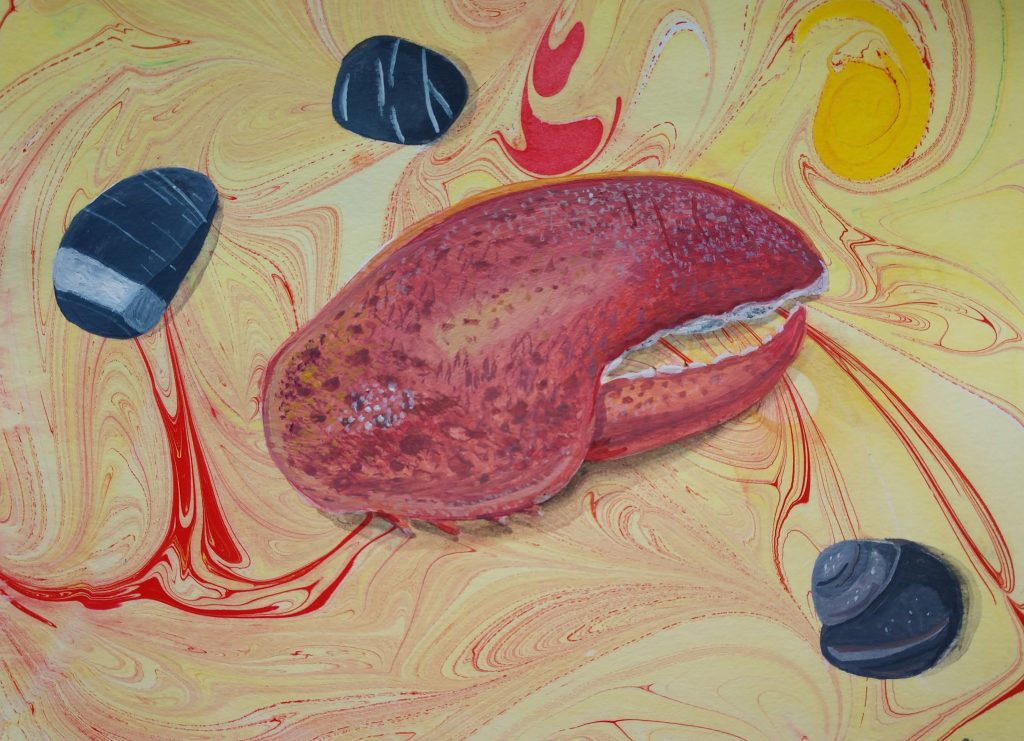
Basically, my art shapes my academic work by illustrating good habits. More specifically, making art shows me the benefits of consistently working in small amounts every day, the benefit of giving ideas time to grow, and being open to change within those ideas. I think they’re all important, so I’ll definitely keep making art and learning from it as I continue this academic journey.